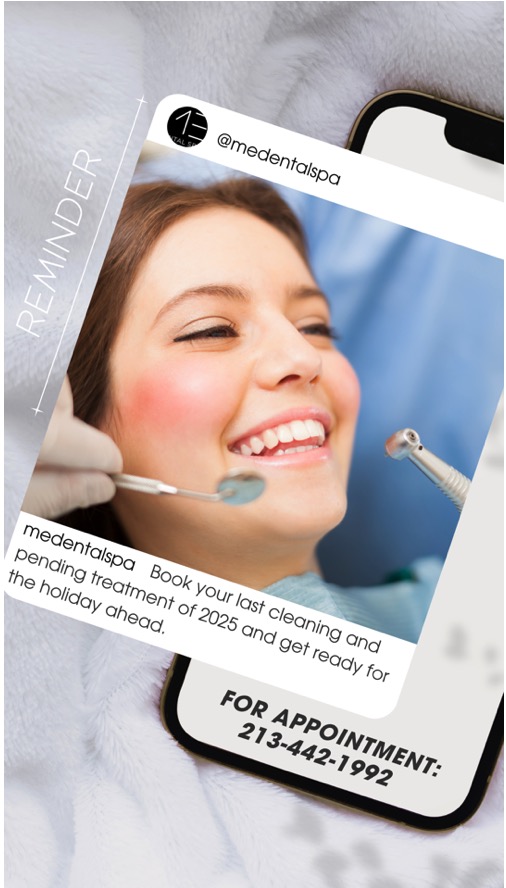Comments
DENTAL HEALTH - The field of dentistry has undergone significant changes with the advancement of technology. One area that has seen progress is dental care especially when it comes to dental cleanings. These innovative developments have brought advantages to both professionals and patients.
Exploring Ultrasonic Cleaning
A leap in technology in dental cleanings is the introduction of ultrasonic cleaning devices. In the past, manual scaling and scraping were common methods for removing plaque and tartar from teeth. However, the use of technology has made these procedures more efficient and comfortable.
Ultrasonic scalers work by emitting frequency waves that create tiny bubbles around the device tip. As these bubbles burst near the tooth surface, they produce vibrations that effectively eliminate plaque and tartar without causing any discomfort or harm to the teeth or gums.
Understanding Air Polishing Systems
Another innovation in dental cleanings is air polishing systems. Previously, dentists relied on pastes to manually remove stains from teeth. With air polishing systems, a mix of air, water, and small sodium bicarbonate particles is used to remove surface stains efficiently. This approach offers advantages over other techniques. Air polishing systems are gentler on tooth enamel yet deliver stain removal outcomes.
They also save time compared to conventional methods, enabling dentists to offer cleanings efficiently without compromising quality. Moreover, with advancements in technology, some air polishing devices now come with pressure settings and interchangeable nozzles for stain removal in hard-to-reach mouth areas, ensuring a customized cleaning experience tailored to individual patient needs.
Digital Imaging for Accurate Diagnosis
In the realm of dental care, digital imaging plays a crucial role in not only eliminating plaque and stains but also diagnosing potential oral health issues accurately. Technologies like cameras and digital X rays enhance precision significantly. Intraoral cameras capture images of the mouth and teeth providing real time visuals that reveal insights often missed during inspections. These tools also empower dentists to educate patients about their health by showing them what’s happening inside their mouths.
Digital X rays offer advantages over film based radiography. These advanced imaging systems are faster and more efficient emitting radiation levels while producing results.Dentists have the ability to zoom in adjust image clarity and compare past X rays to enhance their capabilities.
Laser Technology for Improved Periodontal Treatment
Advancements in dentistry have revolutionized dental treatment. Laser technology is now a choice for treating gum diseases such as gingivitis and periodontitis due to its invasive nature.
Laser assisted periodontal therapy involves using light wavelengths to remove gum tissue and bacteria while encouraging gum reattachment. This approach eliminates the need for surgery and reduces side effects like bleeding, swelling and discomfort.
Moreover, lasers promote collagen production in the gums, aiding in tissue regeneration and enhancing gum health. The precise targeting of lasers ensures that only infected areas are treated while preserving surrounding tissue.
Telehealth Services and Remote Monitoring
Advancements in dental technology extend beyond clinics to improve care through telehealth platforms and remote monitoring systems. These innovations enable professionals to monitor a patient's health progress remotely between regular checkups.
Telehealth appointments provide patients with the convenience of consulting with dentists from their homes or workplaces. Through videoconferencing tools, dentists can evaluate patients' oral health status, offer advice on hygiene practices, or address any concerns effectively.
Remote monitoring systems make use of technology like toothbrushes that connect via Bluetooth or oral health applications to keep track of brushing routines and identify issues early on. Dentists have the ability to remotely oversee their patient’s oral health and step in if needed to prevent problems, from arising while also improving preventive care.
Conclusion
Technological advancements have significantly enhanced dental cleanings. With the introduction of cleaning tools, air polishing systems, digital imaging technologies, and laser-assisted periodontal therapy, dentists now have access to effective instruments for providing top-notch patient care.
As the dental field continues to embrace these innovations, patients can anticipate faster procedures, shorter treatment durations, increased comfort during cleanings, and a higher level of education on oral health. By blending technology with expertise, dental professionals can offer superior preventive care and address oral health issues proactively.
###

















